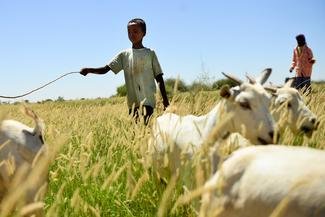New section
Large sections of the population have been impoverished since the collapse of socialist systems in Eastern Europe. Poverty is one of the main causes of child labor.
Many services that used to be taken for granted, such as education, suddenly cost money and everyday life has become expensive. By the widespread unemployment a school leaving certificate is no longer a guarantee of a job. In addition, fewer and fewer parents take care that their children go to school regularly.
The quickly earned money counts more than an education without realizing that the children get into a vicious cycle. They can never have a real job and are likely to be forced to send their own children to work as well.
Child labor is a relatively new phenomenon in Eastern Europe. Paradoxically, this lack of tradition means that children are even more at risk than in developing countries, where child labor is sometimes officially carried out.
Working Eastern European children often move around the streets in a criminal environment and are at risk from child prostitution and pornography.
Many children somehow struggle on the street. Their families have broken up or the children have fled violence at home.
In addition to the vulnerable street children, there are also many children who are temporarily or permanently employed in agriculture as cheap labor. The pesticides often cause permanent health damage to the children.
Take Portugal, for example
Child labor also exists in western European countries. Even if there are only a few reliable figures, studies estimate the extent of child labor to be very high.
Whether in Italy, Great Britain, Spain and Portugal – despite compulsory school attendance, children often do illegal work that prevents them from attending school in whole or at least in part.
According to estimates by Portuguese aid organizations, more than 200,000 school-age children were still working full-time in Portugal in the 1990s, most of them in agriculture, the shoe and textile industry.
The number declined significantly at the beginning of the 21st century through government programs that curb child labor. But with the economic crisis of 2008, which hit Portugal hard, the number of working children rose again. In particular, small agricultural businesses can no longer afford other workers.
The most important, but also the most difficult, in the fight against Portuguese child labor is to bring about a change in the way society thinks.
Many poor children are not motivated to go to school and parents do not make them learn. Parents are happy when someone gives their children work, especially since attending school is often difficult to finance.
Given the social and economic difficulties, parents often do not see any benefit for children in school education. Many skilled workers are unemployed and the factories often employ low-paid workers.
Child labor often affects several generations. Former child laborers usually remain lifelong workers and later send their own children back to work.
Child labor can only be combated if it is recognized everywhere that children belong in the school desk and not in the factory or in the field.
Those responsible must develop long-term strategies together. In this situation, it is fatal that the Portuguese state ended its child labor program in 2012 due to lack of funds.
“>
RELATED ITEMS
-
Human rights: child labor – human rights – history – planet knowledge
New section on child labor Knotting carpets by Ulla Rehbein, hewing stones, slaving as house slaves, working in plantations – working all over the world…
-
Human rights: slavery – human rights – history – planet knowledge
New Slavery Section By Gregor Delvaux de Fenffe From antiquity to the present day people have unfree living and working conditions…
-

Essay on child labor child labor in Europe
But it makes all problems easier to solve. The activities of the official Kaleen initiative gave the worst impression. That judgment…
-

Child labor worldwide, world vision germany
On this page we give you an overview of the most important information about child labor and approaches of World Vision…
